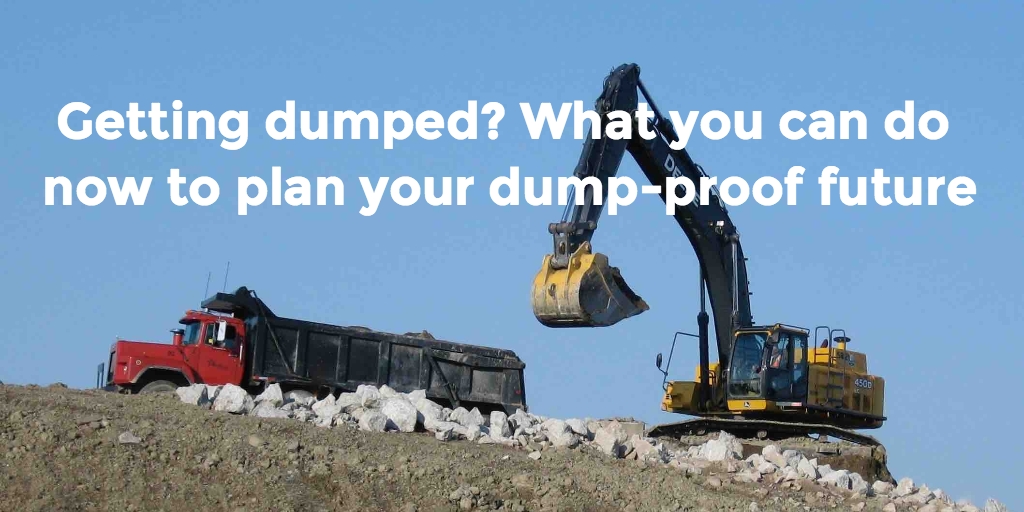I’ve been there. It feels something like Wyle E. Coyote in a Roadrunner cartoon. He runs off a cliff and just hangs there in mid-air, and suddenly sees his predicament – there’s no ground under his feet. It’s that awful realization that what you thought was secure and sound, isn’t.
But while you hang there in mid-air, you’ve already decided that your next step will be a job you can’t get fired from – an independent consulting practice. In an article on our website, I’ve talked about my own Wyle E. Coyote moment in 2009 when I was downsized out of the best job I’ve ever had. The next day, my former employer became the first client of my new consulting business.
So, what can you do now to prepare for your independent future? Here are some of the steps that you can take, starting today, to make for a smooth bounce off the pavement and into your future. They’re good steps for anyone’s career, too.
These steps are all about helping you build your profile as a subject-matter expert in your field, and building your personal connections. Now, I recognize that you may want to go into a totally different field – maybe start a mountain-biking company in Peru – but I’m assuming you want to continue in something like the kind of work you have now.
LinkedIn: making your profile current
You may be worried that if you make a lot of changes to your LinkedIn profile, you’ll raise concerns from your co-workers and your boss that you’re planning a career move of your own. To avoid setting off any alarm bells:
Turn off notifications: Normally, each time you change your profile, LinkedIn will notify all of your connections. You probably don’t want that. To prevent those notifications, go into your profile while in “Edit” mode. Find the green button on the right-hand side of your profile that says, “Notify your network?” Just click on that circle so that the green turns red, and your changes won’t be broadcast. You can easily turn Notifications back on.
Make yourself anonymous: Normal settings in LinkedIn mean that if you look at someone’s profile, LinkedIn will tell them. If you don’t want that, click on your small image in the top right corner, go to Privacy & Settings, and change how much information others are able to see about you.
Next, look through every aspect of your profile. Update your job description, and drop really old jobs off your profile. Think of recent projects you’ve worked on that showcase your abilities, and add those. If you’ve joined organizations, attended conferences, given workshops or done anything else noteworthy, add it to your profile.
If you have examples of your work that you can share without breaching client confidentiality, put them into PDF form and upload them to your LinkedIn profile under “work samples.” If you’ve given speeches and the slides from those presentations are intelligible on their own, post those too.
Why take these steps? It’s because if someone’s heard of you, or met you – and been impressed – they’ll take a look online to see what you’re all about. And, almost certainly the first place you’ll show up online is your LinkedIn profile (I’ve discussed this idea in greater depth in another post, #9).
Building your relationships on LinkedIn
Three aspects of your profile are particularly important:
Connections: These are an important aspect of building your network. If you have a clear idea of the kind of clients you want, be sure to follow their company pages. Then, you’ll be notified when one of your connections gets a job there – and you may find that you have friends at the companies you want as clients. That’s a really good thing.
Recommendations: If you don’t have people saying good things about you, that silence can speak louder than words. So, reach out to people who can recommend you – by recommending them. If they accept your recommendation, they’ll get a little notification from LinkedIn – “And do you want to recommend this person back again?” That way, you build your Recommendations.
Groups: Some groups on LinkedIn are vibrant, active communities. Others are just places where people post their blog posts and run, with no interaction. Others are dead, or mostly so. You want active groups, either related to your own profession or occupation (which is where you learn) or to the industry you want to serve (which is where potential clients get to know you).
Publishing Posts on LinkedIn
Since about 2014, LinkedIn has blossomed as a content platform – a way to show your expertise through long-form content through what they call Posts. If you look at my profile, you can see several examples. One aspect of LinkedIn that many people don’t know, is that you can have a link you can use (here’s mine) to send a collection of all your LinkedIn Posts to someone, or include as a hyperlink.
Your LinkedIn posts get published on your profile, and notifications are sent to your connections. But they’re also available to the wider LinkedIn community, so it helps to put in the right keywords so that they’re findable online.
Speaking engagements
One of the most effective ways to build your professional profile, and be seen as a subject-matter expert, is through public speaking. If you present to groups within your profession, you’ll gain credibility without setting off any alarm bells within your current organization.
You can get greater leverage from your work on the speech by using it as the basis for other content, such as LinkedIn Posts.
Not everyone is mentally set up for entrepreneurship. But the way the economy is going, there’s not a lot of full-time, “permanent” work out there. Even if you think your job is secure, it helps to think like a “corporation of one” in building your own profile.


